Clipart tagged: ‘rhombohedron’
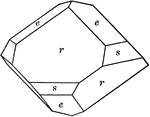
Chabazite
"Hexagonal-rhombohedral. Common form is the simple rhombohedron, r, having nearly cubic angles. May…

Copper Silicate Showing Rhombohedral Tetartohedrism In the Hexagonal System
This is a crystal of Copper Silicate (Dioptase) with a rhombohedron of the third order, (s), in combination…

Crystal of Dioptase
"...represents a crystal of dioptase with the fundamental rhombohedron (r) and the hexagonal prism of…
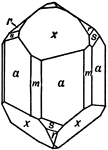
Phenacite
This crystal is mainly terminated by a rhombohedron of the third order, (x). With this form are associated…

Quartz
"Terminated usually by a combination of a positive and negative rhombohedron, which often are so equally…

Quartz
"Terminated usually by a combination of a positive and negative rhombohedron, which often are so equally…
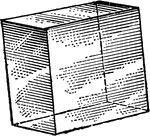
Rhombohedron
"Science has succeeded in classifying the thousands of known crystals in six systems, to each of which…
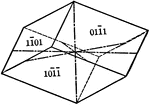
Negative rhombohedron
"The rhombohedron is a form consists of six rhombic-shaped faces, which correspond in their position…
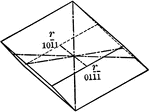
Positive rhombohedron
"The rhombohedron is a form consists of six rhombic-shaped faces, which correspond in their position…
!["The zig-zag lateral edges [of a scalenohedron] coincide with the similar edges of a rhombohedron..." -The Encyclopedia Britannica 1910](https://etc.usf.edu/clipart/35500/35584/scale2_35584_mth.gif)
Scalenohedron with inscribed Rhombohedron
"The zig-zag lateral edges [of a scalenohedron] coincide with the similar edges of a rhombohedron..."…